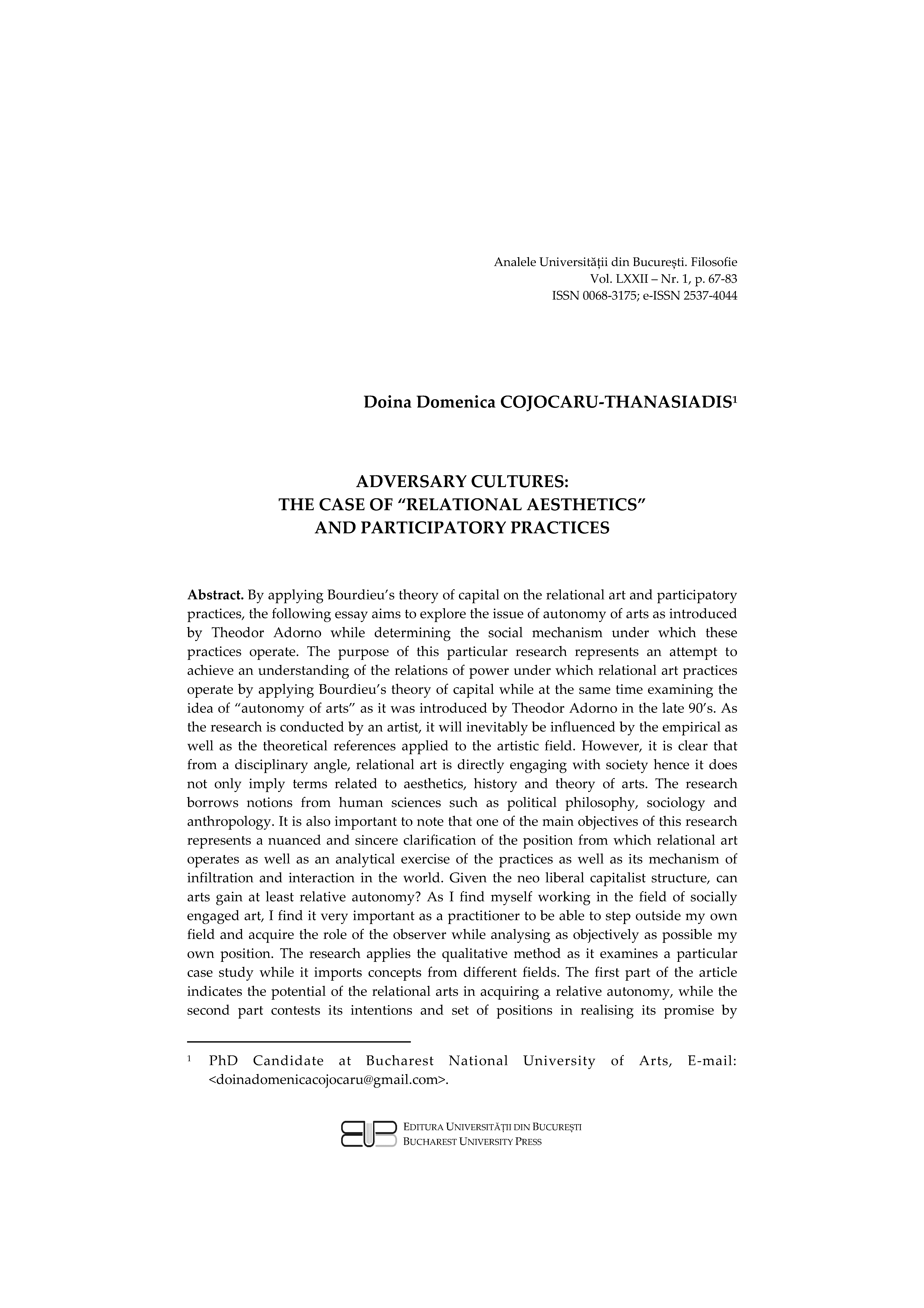ADVERSARY CULTURES: THE CASE OF “RELATIONAL AESTHETICS” AND PARTICIPATORY PRACTICES
DOI:
https://doi.org/10.62229/aubpslxxi/1_23/4Keywords:
hegemony, autonomy of arts, adversary cultures, relational aesthetics, cultural capitalAbstract
By applying Bourdieu’s theory of capital on the relational art and participatory practices, the following essay aims to explore the issue of autonomy of arts as introduced by Theodor Adorno while determining the social mechanism under which these practices operate. The purpose of this particular research represents an attempt to achieve an understanding of the relations of power under which relational art practices operate by applying Bourdieu’s theory of capital while at the same time examining the idea of “autonomy of arts” as it was introduced by Theodor Adorno in the late 90’s. As the research is conducted by an artist, it will inevitably be influenced by the empirical as well as the theoretical references applied to the artistic field. However, it is clear that from a disciplinary angle, relational art is directly engaging with society hence it does not only imply terms related to aesthetics, history and theory of arts. The research
borrows notions from human sciences such as political philosophy, sociology and anthropology. It is also important to note that one of the main objectives of this research represents a nuanced and sincere clarification of the position from which relational art operates as well as an analytical exercise of the practices as well as its mechanism of infiltration and interaction in the world. Given the neo liberal capitalist structure, can arts gain at least relative autonomy? As I find myself working in the field of socially engaged art, I find it very important as a practitioner to be able to step outside my own field and acquire the role of the observer while analysing as objectively as possible my own position. The research applies the qualitative method as it examines a particular case study while it imports concepts from different fields. The first part of the article indicates the potential of the relational arts in acquiring a relative autonomy, while the second part contests its intentions and set of positions in realising its promise by applying Bourdieu’s theory of capital. The scope of the research is far from comprehensive as several theories that intersect with the field, as well as projects, are not being analysed while a lot of Bourdieu’s writings are left outside. Still, the essay recognises the influence of authors like Claire Bishop, Roland Barthes, Walter Benjamin, Guy Debord, Theodor Adorno, Hannah Arendt, Giorgio Agamben, Terry Smith, Michel Foucault, Jean Baudrillard as well as other historians and art theoreticians.





